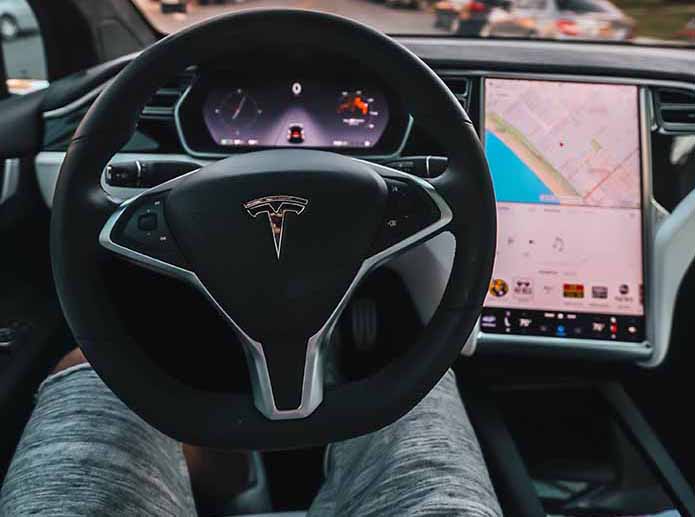Study shows transportation beliefs of 20 years ago largely myths, predicts today's will be as well

LAWRENCE — As long as humans have been moving, there have been fantastic predictions about how technology will revolutionize transportation. Most of them turn out to be myths. A University of Kansas researcher has written a study revisiting an influential article that called out widely held transportation predictions of 20 years ago as myths, finding it is still highly accurate.
 In 2000, influential transportation geography scholar William Black published “An Unpopular Essay on Transportation.” The highly cited study argued that nine popularly held beliefs about the future of transportation at the time were just myths. Bradley Lane, associate professor of public affairs & administration at KU, revisited that study for a 25th-anniversary commemorative issue of the Journal of Transport Geography. Black was quite accurate in his predictions, Lane said.
In 2000, influential transportation geography scholar William Black published “An Unpopular Essay on Transportation.” The highly cited study argued that nine popularly held beliefs about the future of transportation at the time were just myths. Bradley Lane, associate professor of public affairs & administration at KU, revisited that study for a 25th-anniversary commemorative issue of the Journal of Transport Geography. Black was quite accurate in his predictions, Lane said.
“Black identified what he thought of as nine myths in transportation at the time. Some related to sustainability, some not. In hindsight, some were laughable,” Lane said. “Others were not as much, but especially ideas like ethanol could replace oil, because there’s only X amount of arable land to produce corn and the idea that telecommunications technology could greatly reduce the need for transport were not realistic.”
In his study, Lane details how five of the nine beliefs Black identified have solidly proven to be myths, while four still have potential to improve sustainable transportation. Lane also dissects the current idea of three revolutions of transportation, their potential for being realized and whether they are likely to make things worse before making them better.
The five popular transport beliefs in 2000 that still prove to be myths:
- Ethanol fuel will reduce CO2 emissions
- Telecommuting will reduce urban travel
- Globalization will reduce urban travel
- Transit ridership will grow with an aging population
- Communication technology will reduce the need and amount of personal travel.
Four beliefs that have potential:
- Intelligent transport systems will help achieve sustainable transport
- Transport investments lead to nearby economic development
- Investments in transport are “safe” investments
- Connecting geographically remote places will stimulate local economies.
The more realistic beliefs show more promise in the developed world, Lane said, especially that of intelligent transport systems boosting sustainable transportation. Investments in transport have shown to be “safe” as governments around the world have continued to make them, but nearby economic development has not shown to be guaranteed in all locations where such investments are made. Connecting remote locations has shown economic benefits, he wrote.
In today’s transportation research field, there has been much written about “three revolutions” changing the face of transport.
- Alternative fuels
- Connected and autonomous vehicles
- Shared mobility.
Lane, a former graduate student of Black’s, analyzes each from a best-case/worst-case scenario. Each revolution has the potential to prove to be a myth, much like five of Black’s nine points, but it is too early to assume that will happen, Lane said. Each also has the potential to be revolutionary, but there also exists a possibility that they could make things worse before they make things better in terms of sustainable transportation, Lane said.
On the positive side of the ledger, alternative fuels have the potential to greatly reduce the amount of oil used for transportation, thereby also greatly reducing the amount of CO2 emissions from vehicles. That could reduce pollution and greenhouse gases released into the atmosphere. Connected and autonomous vehicles could realistically boost efficiency of travel, reduce fatalities from traffic accidents and improve accessibility of transportation to underserved populations. Shared mobility, such as rideshare services, could reduce the number of vehicles on the road, improving efficiency of roadways, reducing pollution and boosting accessibility.
But all of those possibilities have potential downfalls. Alternative fuels may not be ready for wide use for many years, not be available in all types of vehicles or possibly lead to a net increase in emissions before leading to a decrease. Connected and autonomous vehicles could put more vehicles on the road if their availability encourages people to make more trips. Safety is also a concern.
“There’s a much bigger question of how we look at the upside of these modes of transport and the road to ‘safe enough,’” Lane said. “There’s also a dichotomy of safety, like when an autonomous car struck and killed a pedestrian recently, it shut down all testing. Or whenever someone crashes a Tesla, their safety is called into question. Yet, our current technology kills thousands every year, and we accept that as the cost of having automobiles as our primary mode of travel.”
Those perceptions could impede adoption, and for ride-sharing, there are limits for its use in rural areas.
Regardless of the possibilities for each innovation, Lane said research would be best served by not assuming everyone will adopt the technology. Resisting the trend to focus research in classic early-adopter locations such as California will also go a long way to providing a better understanding of the future of transportation.
“The research tends to overestimate how much we know about the diffusion of new technology, and it has always done that,” Lane said. “This is a lot more complicated than assuming everyone will have or want the newest technology. We shouldn’t focus too much on technology and what it can do, and instead consider why people might adopt it, what the diffusion of that technology looks like and what the impacts will be of that diffusion. Technology won’t necessarily save us, and it could make things worse before it makes them better.”
Image credit: Pexels.com